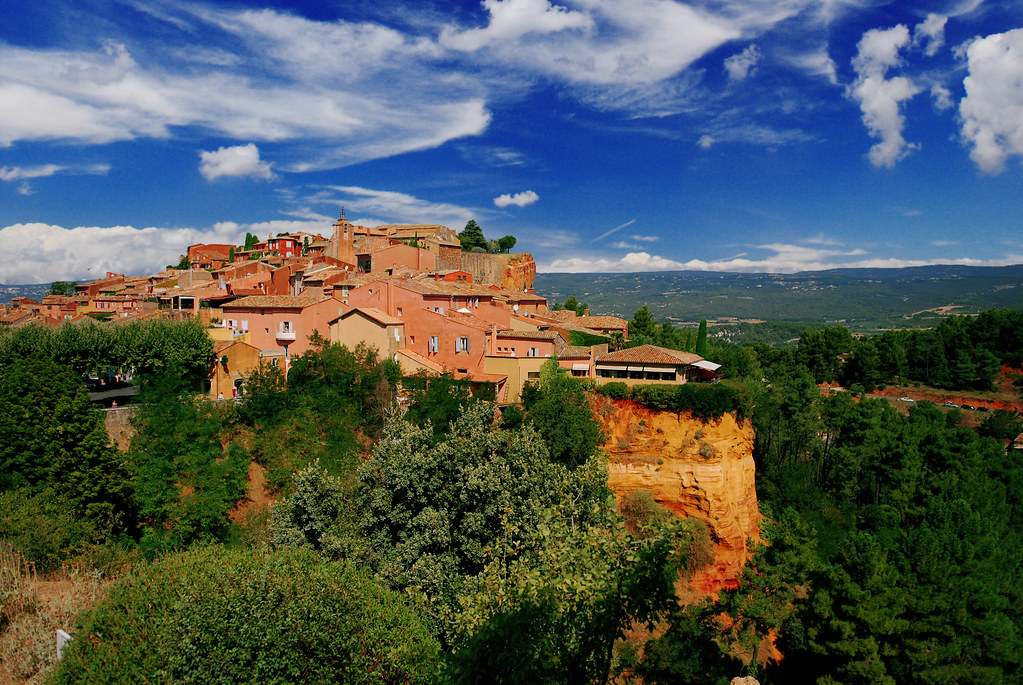Recently I was lucky enough to spend a sun-kissed week in the beautiful town of Céret in the Languedoc-Roussillon region of France. Being only three miles from the Spanish border, we flew into Barcelona and drove the 110km to Céret but you could also fly into Perpignan which is about 45 mins drive away. At the foot of the Pyrenees, the area has some fantastic scenery with mountains in the distance and dramatic cliff edged drives along the coast, overlooking the Mediterranean.
Céret is very much a Catalonian town full of both French and Spanish delights alike: think baguettes with Manchego and dry cured ham, wild boar pâté and olive oil, and it has had some very famous artistic residents over the years, the most famous of which being Picasso. It’s a wonderful, laid back town with a passion for dance, music, art and boules and you can while away many an hour sitting with a wine in the square watching the world go by.
The area itself is very important for cherries and they are the first in France to ripen. Since 1932, the first cherries of the season are sent to the President of France. There is, however, an increasing importance on olive trees and grapevines and there is a lot of planting going on.
There are two types of wine in the region, both protected by AOC status – the boundaries for both being the same. Banyuls is a dessert wine made from old vines grown on steep terraces and fortified much like port. Grape varieties permitted include: Carignan, Grenache, Macabeu and Muscat. The wine is a dark, heady, dried fruit and spices variety which always reminds me of Christmas cake. It is revered in the region, popular with the locals and is also used extensively in cooking.
Grapes which are not destined to become Banyuls wine make up the other side of the AOC, Collioure. Banyuls is the more revered wine internationally and does fetch a higher price however, for the British holiday-maker in particular, the wines of Collioure tend to be much more accessible. Red, whites and rosé wines are all made in the region and the primary grapes are Grenache, Syrah and Mourvedre.
The climate here is distinctly Mediterranean with both the mountains and the sea having a strong influence. During the summer, temperatures are very warm and dry however, in the evening, cool winds from the mountains blow through the vineyards and this can help moderate the temperature and gives the vines a rest overnight.
Due to the high temperatures, the reds down here are somewhat punchy: big, powerful, fruity and spicy – lots of black cherry, blackberries and black pepper. The whites can be full bodied and dark however, closer to the sea breezes, you can get some lovely, high acid, refreshing numbers. The coastal towns of Collioure (the town from which the AOC gets its name) as well as Banyuls and Argelès in particular, have vineyards all the way up to the sea and these are where some of the best examples of the regions’ white and rosé can be found.
The rosé wine here tends to be dark in colour but don’t let that put you off. Whilst a little heavier than the dusky pink wines we have come to love in the UK, the cool breezes have allowed some of the acidity to remain so the wine is still refreshing. The bold strawberry and raspberry flavours are juicy and, in the heat of the sun, are very welcoming – anything less would perhaps feel a little insipid.
There are a number of vineyards in the region but many of them are co-ops and it’s not as common to find the big Chateau tours like Bordeaux or Burgundy – there are some exceptions but opening times can be difficult and, in the case of Chateau D’Aubiry, we found it was closed permanently to visitors. There is, however, a very easy wine route to follow (if you have a car) – Routes Des Vins – you can pick up a map from tourist information or from a vineyard. The route is well signposted from the road and covers the whole AOC area.
We visited Château Corneilla-Del-Vercol – just a short drive from Ceret. The Château was built in the 12th Century by the Knights Templar and the vineyard has been in the family since 1485 – it is still run by the 27th generation who live in the Château across the road from the shop. Whilst you can’t go inside, they are happy for visitors to take pictures of the outside.
They make 19 different wines here – although many of them are along the same lines with regards to the grape varieties, they make different levels of wine depending on the quality of the grapes. They also make special occasion wines and this one, La Canaille, was made in celebration of the marriage of one of the sons to a Burgundian lady. All of the wines were very drinkable, affordable, and typical of the area.
Whilst in Banyuls, we also visited the Terre des Templiers and a few of the caves – of which there are many. The predominant wine is Banyuls, of course, but the wines of Collioure are well featured. Whilst I didn’t find anything which blew my socks off, we came away with some spoils to drink over dinner. After a week enjoying some easy-drinking wine, swimming in the sea and embracing the laid back culture, I wasn’t sure I was ready to come home.

No Responses